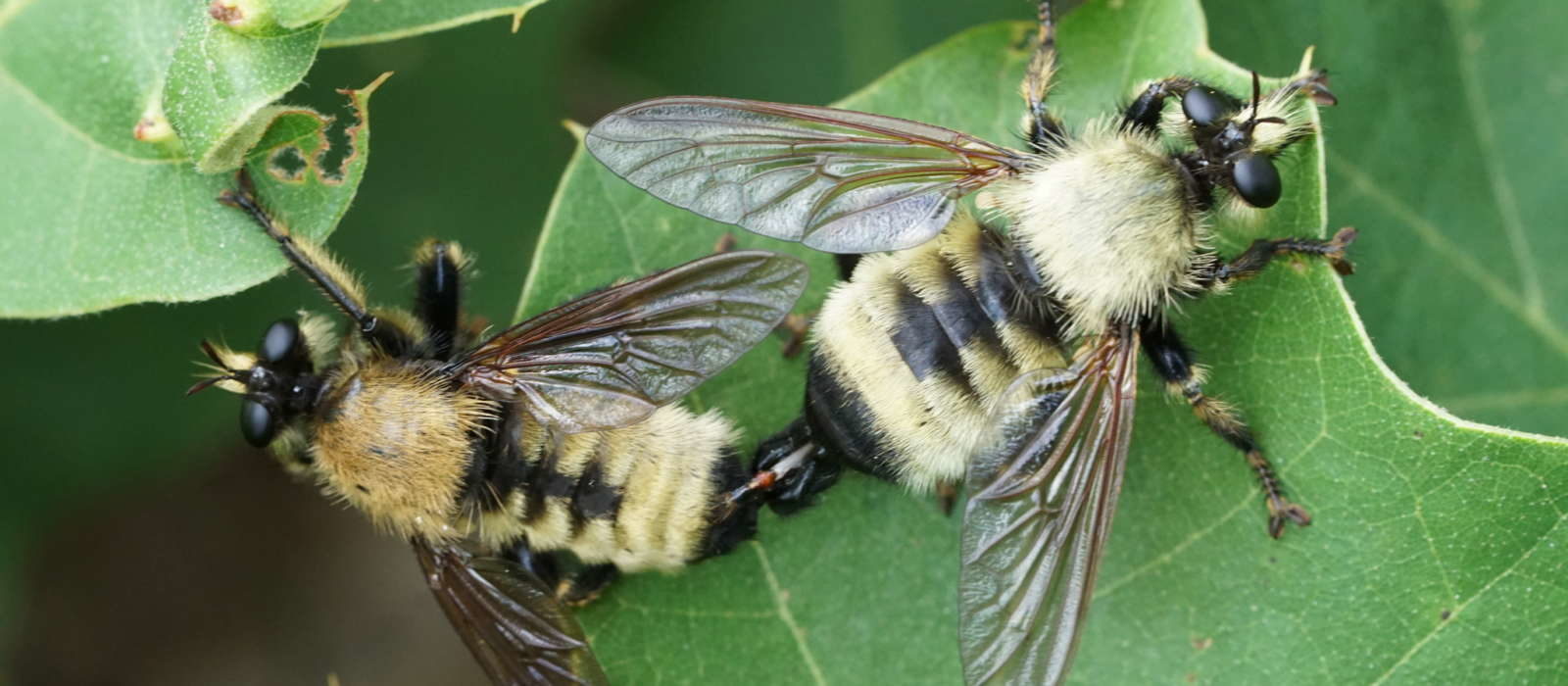Asiloidea (Robber Flies and Allies)
The superfamily Asiloidea is a fascinating one and, by fly standards, relatively accessible to amateur study. The accompanying checklist includes members of three families: the predatory robber flies (Asilidae); the bee flies (Bombyliidae), most of which have parasitic larvae and adults that visit flowers; and the stiletto flies (Therevidae), with predatory larvae. Two other families in Asiloidea – the Mydas flies (Mydidae) and the window flies (Scenopinidae) – have distributions that seem likely to put representatives on Martha’s Vineyard, but so far we are unaware of any island records of these families.
Given the relatively small number of species in this group that are known from the Vineyard, we’ve opted to include the entire superfamily in our checklist. At present, the checklist includes 36 species: 22 Asilids, 10 Bombyliids, and four Therevids. These numbers represent a decent start, but we are confident that many more members of these families are present and awaiting documentation. Because members of this superfamily tend to be fairly large and are sometimes visually distinctive, they can often be identified even to the species level from photographs. So this is a group to which amateur observers can easily contribute significantly to our knowledge.
The accompanying checklist is based on iNaturalist observations. “Research grade” observations are listed here at the species level. Several other genera are included for which iNaturalist includes compelling records at the genus level. Note that close to half of all the Vineyard Asiloidea records in iNaturalist have been identified only to the genus level or higher. Genus-level listings could easily include more than one species, so there is also ample opportunity for specialists to add to this list.
Asiloidea has a long season on the Vineyard, with the first species active in early or mid-April and the last ones finally petering out around late October. And members of this group occur in a wide range of habitats, from settled areas to oak woodland to sandplain grassland. A few members, such as the robber fly Efferia aestuans, are clearly quite common and widespread; many other species are so far documented here only by single records (though one should not necessarily conclude that these species are actually rare).
Matt Pelikan; edited by Matt Pelikan, August 29, 2024
